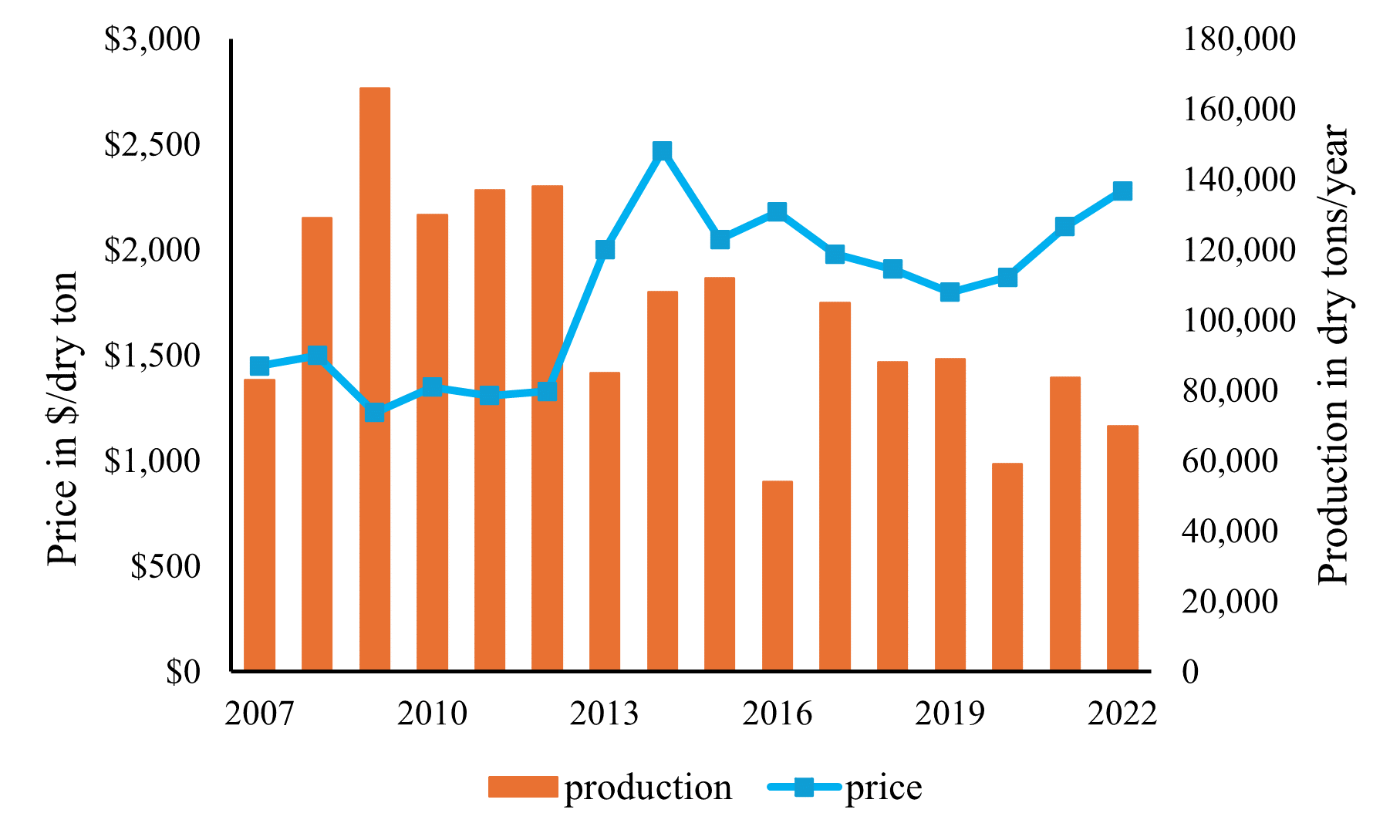Domena A. Agyeman, UCCE Ag and Natural Resources Economic Advisor; Butte, Glenn, and Tehama Counties
After years of removing acreage to adjust to a changing market, California prune growers are now receiving a higher price. Data from USDA-NASS shows that prune price received has been trending upwards for the past few years (Figure 1). However, rising production costs continue to squeeze profit margins.

Figure 1. California prune production (dry tons/year) and price received ($/dry ton) from 2007 to 2022. Data source: Survey data from USDA-NASS
The five percent rule can be an effective principle for improving profits. The rule advocates for small improvements across multiple aspects of an operation rather than striving for large gains in one or two areas. Coined by Danny Klinefelter, the rule suggests that a 5% increase in price received, a 5% decrease in costs, and a 5% increase in yield will often produce more than100% increase in net returns. This outcome is possible because the effect of these small improvements is cumulative, multiplicative, and compounding, and not a simple 15% (5%+5%+5%) increase.
Below is a simple per-acre illustration of how small improvements in yield, price, and cost together can lead to big gains in profits.

Together, these 5% improvements increase profit from $1,000/acre to $2,018/acre— a 102% increase in profit. Many individual producers are price ‘takers,’ so they do not have control over the price they receive for their product, even when their cost of production increases. In this illustration, if cost can be cut by 5%, yield increased by 5%, and price remains the same, then profit will increase by 65%.
The whole idea is to focus on achieving small, incremental changes across multiple areas of your operation and not chase drastic improvements in only some aspects, which can be expensive, risky, frustrating, or lead to missed opportunities.
Start by conducting a thorough evaluation of your operations to identify opportunities for small improvements. It is dangerous to get stuck in the mindset of “We’ve always done it this way,” as Kristjan Hebert emphasizes in his presentation ‘5% Rule-Baby Steps to Bigger Profits.’ Actively seek out recommended practices that could potentially boost your production efficiency and yield. For example, timely thinning and harvesting are key to large, high-value fruit production, while also reducing harvesting and drying costs. Optimize your fertilizer usage by applying small doses throughout the season rather than in large slugs at one time. Decrease weed management costs by reducing the frequency of spraying or mowing, rather than cutting weed management all together. Generally, growers should continuously assess all aspects of their operation, seeking opportunities for cost reduction, yield improvement, and potentially commanding a higher price.
Consistency is key to adhering to the 5% rule. It is an ongoing process and cannot be achieved overnight. It requires consistently striving for small improvements year after year, to experience the big cumulative effect.


Leave a Reply